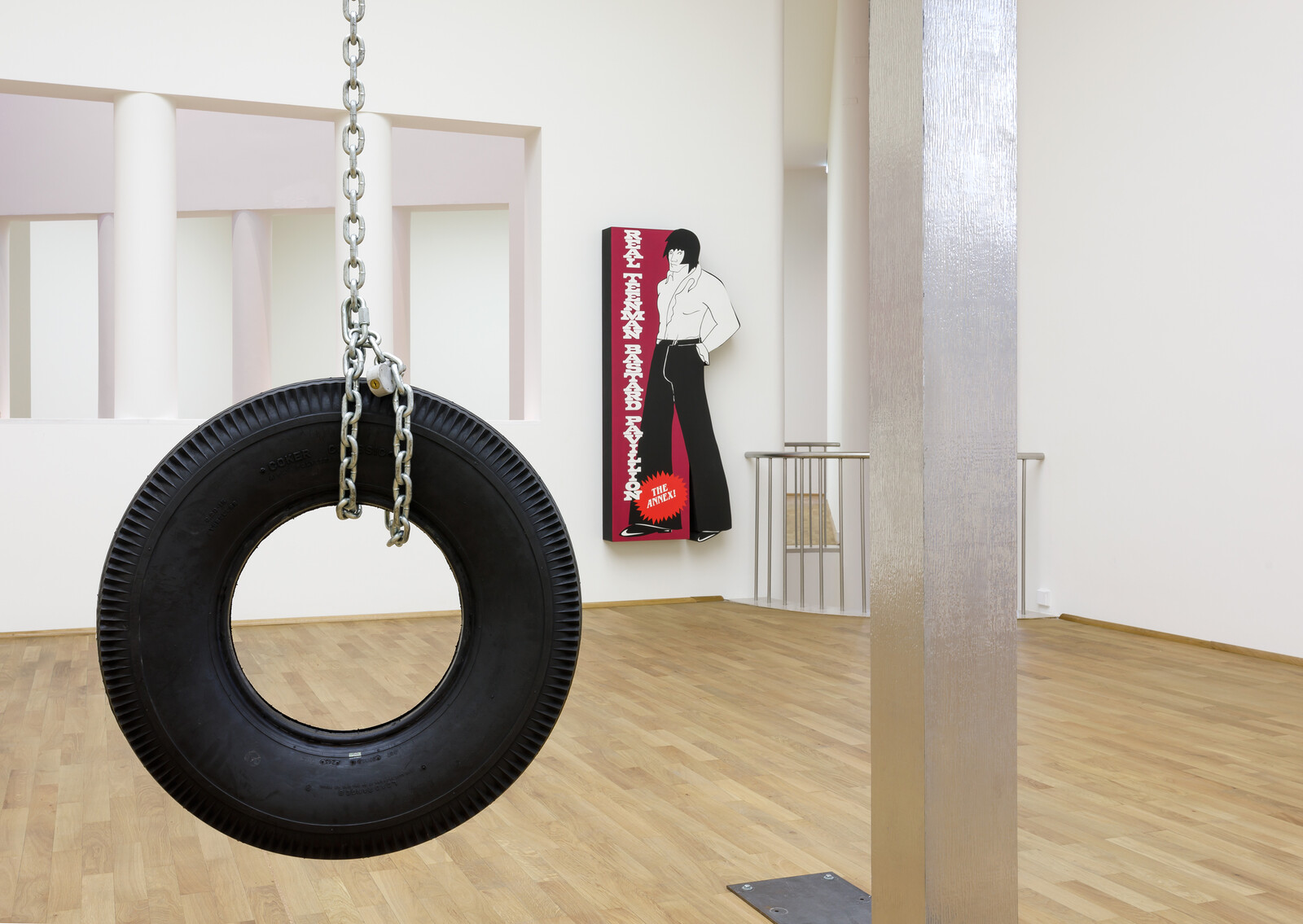Categories
Subjects
Authors
Artists
Venues
Locations
Calendar
Filter
Done
April 27, 2023 – Review
Elizabeth Price’s “Sound of the Break”
Lua Vollaard

A tremble, a silence, and a piercing clatter: “Sound of the Break” derives its name from a sequence in Elizabeth Price’s video installation A RESTORATION (2016), which displays what a voiceover calls “a great hectic gathering” of archival images of vessels from Oxford’s Pitt Rivers and Ashmolean museums. A disembodied choir argues that these objects are made to be broken, so that their echoes can resound. When a Boscobel Oak wineglass falls and breaks off-screen, the choir declares it “a small sacrifice” of which “the great rumble resonates.”
A RESTORATION brings together many of Price’s recurring motifs: choirs of synthetically generated voices; archives absent from the historic record; interwoven technological histories; architectural plans as conceptual metaphors; sardonic institutional critiques; and untold feminist cosmologies. It is one of four works in her solo exhibition at the Schirn Kunsthalle Frankfurt (the building, fittingly, is also home to a music school). Two dark spaces, each displaying two video works shown consecutively on loop, connect to a central viewing room in which four screens show new video lectures, made in 2020 during lockdown in London. Other works here include FELT TIP (2018), on how information technologies transformed the workplace; UNDERFOOT (2022), on the sonic …
January 11, 2022 – Review
“Crip Time”
Kenny Fries

The sign next to the interior ramp at the Museum für Moderne Kunst (MMK) indicates that it is too steep for wheelchair users. Though there is an elevator to access the three floors of exhibition space, the inaccessible ramp and its sign form an apt metaphor for the “Crip Time” exhibit.
Disability/feminist/queer scholar Alison Kafer defines crip time as follows: “rather than bend disabled bodies and minds to meet the clock, crip time bends the clock to meet disabled bodies and minds.” By this definition “Crip Time”—unlike Shannon Finnegan’s refashioned one-handed clocks, Have you ever fallen in love with a clock? (2021), in which the days of the week replace numbers—has not bent the clock nearly enough.
An entire major museum dedicated to disability-related work from 41 international artists and collaboratives is a big deal; as far as I know, on this scale it’s unprecedented. But the work is shown without the necessary cultural, historical, and political context. Too many times one is forced to ask how the work relates to crip time and, even when the connection is obvious, it is too often in the medical model of disability, in which the body’s impairment is at issue, rather …
April 1, 2019 – Review
Cady Noland
Laura McLean-Ferris

A “gross internalization of the game at its most spartan” is how Cady Noland described the mechanism of psychopathy in her urtext “Towards a Metalanguage of Evil.” It’s one description of several in that cold read of power dynamics in 1980s America, that (it has been frequently noted) also apply to the artist’s own work. Her sculptures glint with something stark and cruelly observed, and include potent symbols that have been weaponized in the shaping of North America: guns, handcuffs, walls, flags, celebrities, and beer are orchestrated into cool metallic frameworks. One of art’s most famous absentees, Noland ceased to exhibit new work in the early 2000s, and has declined to make or authorize exhibitions for much of that time. That makes this grimly elegant survey show at Museum für Moderne Kunst (MMK), curated by Susanne Pfeffer, a rare event of some note. Magnificently executed, the exhibition features more than 80 works as well as a number of consonant works by artists in MMK’s collection such as Charlotte Posenenske, Andy Warhol, and Steven Parrino.
The brutal and asocial qualities of Noland’s work are accentuated by the particularities of MMK’s large isosceles exhibition spaces. Hans Hollein’s architecture, which has a viewing-machine quality …